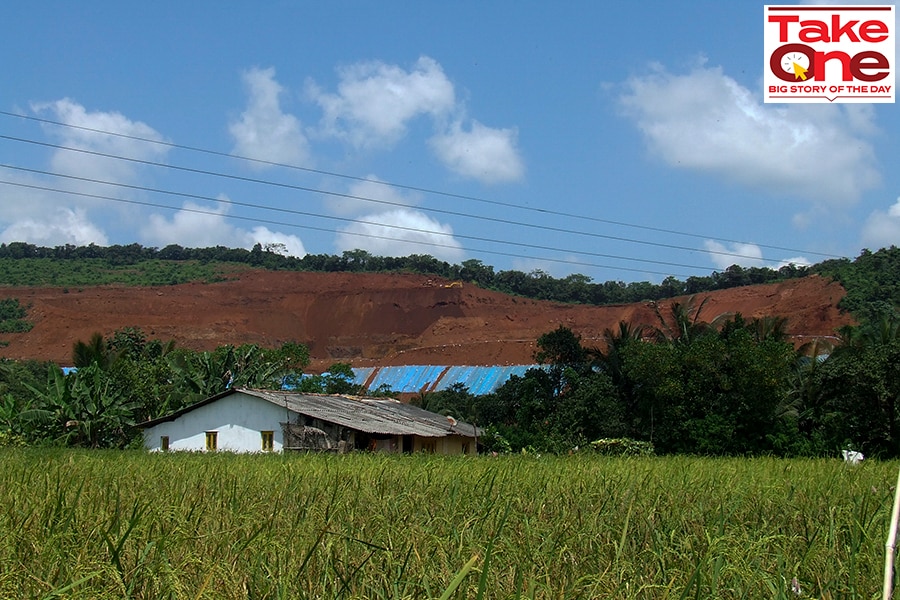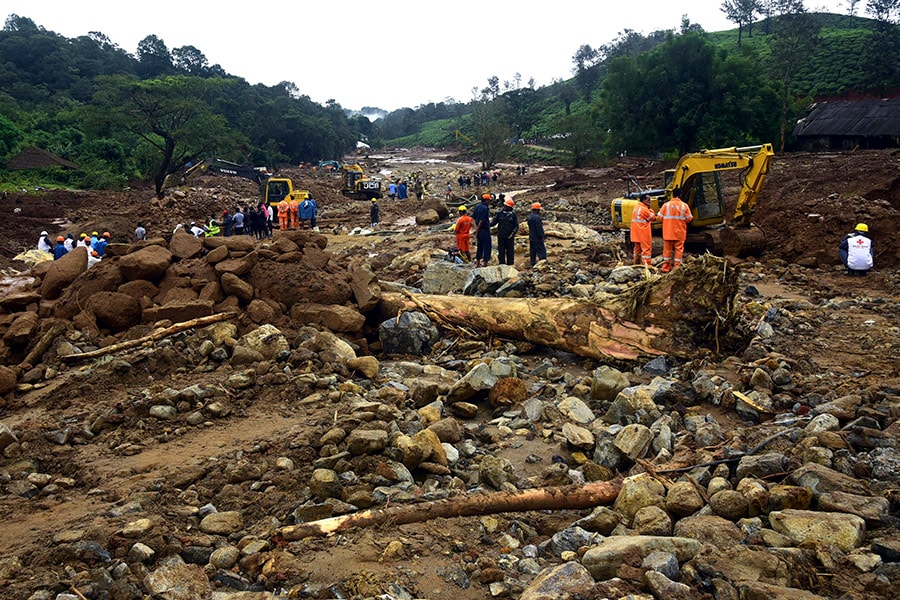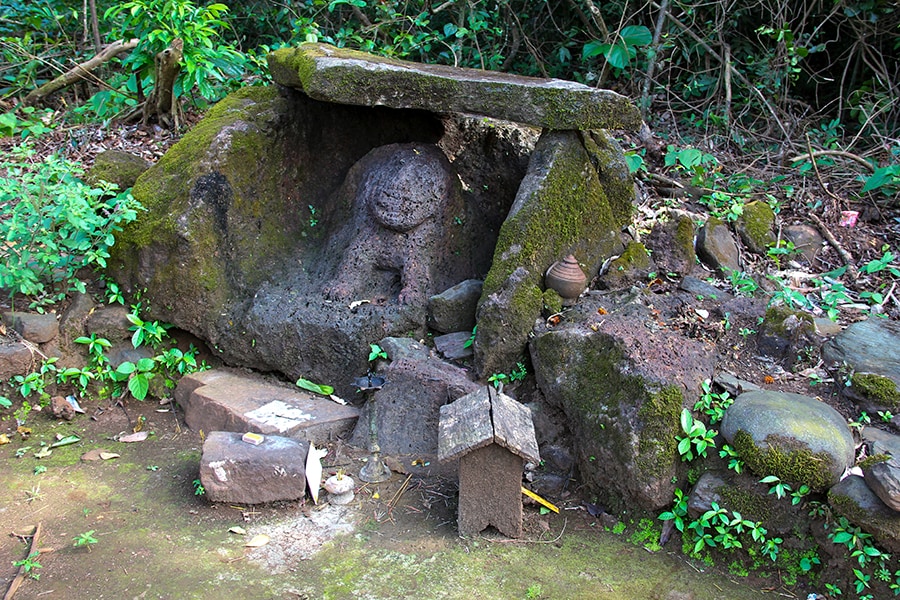
Devastation in the Western Ghats in the name of unplanned development
Activities like rampant stone quarrying, construction of infrastructure in fragile areas and deforestation for commercial plantation have led to massive changes in the Ghats, causing landslides, floods, droughts and other events in which hundreds have died
 The first of 49 new mines sanctioned in the dazzlingly beautiful Sawantwadi-Dodamarg Wildlife corridor in 2010, with blue plastic sheets as 'mitigation measures.'
The first of 49 new mines sanctioned in the dazzlingly beautiful Sawantwadi-Dodamarg Wildlife corridor in 2010, with blue plastic sheets as 'mitigation measures.'
Image: Sumaira Abdulali
In 2010, in the Sawantwadi-Dodamarg Wildlife Corridor in the Western Ghats, a car behind us swerved ahead and screeched to a halt. A man got out. I shoved my camera under the seat. Just sightseeing, we said: “We’re intrigued by the strange red mountain without trees, loose earth cursorily covered by blue plastic sheets.” He peered into the car, looked suspicious, but drove off. Viju B and I heaved a sigh of relief. This would not be the first threat to us while investigating mining sites. We were almost killed, a few months before, on a sand mining site not too far away.
The strange red mountain we saw was the beginning of 49 bauxite mines sanctioned within a dazzlingly beautiful forest. Despite protests from local resident Sandeep Sawant and 22 local gram panchayats in Sindhudurg, one of Maharashtra’s greenest districts, the government had plans to permit new mines and educate children about the importance of mining. In this UNESCO world biodiversity hotspot, surrounded by threatened beauty in this era of climate change, the need for eco-tourism to educate children about natural processes seemed far more pressing.



 Even after recent floods and landslides have devastated parts of the Western Ghats in Kerala, numerous quarries continue to operate and destabilize the slopes. Unscientific expansion of roads and mega tunnel projects are planned;
Even after recent floods and landslides have devastated parts of the Western Ghats in Kerala, numerous quarries continue to operate and destabilize the slopes. Unscientific expansion of roads and mega tunnel projects are planned;  Villagers within the Sawantwadi-Dodamarg wildlife corridor where a new mine is proposed worship this Tiger God. They consider tiger kills as sacrifice and are opposed to mining.
Villagers within the Sawantwadi-Dodamarg wildlife corridor where a new mine is proposed worship this Tiger God. They consider tiger kills as sacrifice and are opposed to mining.



